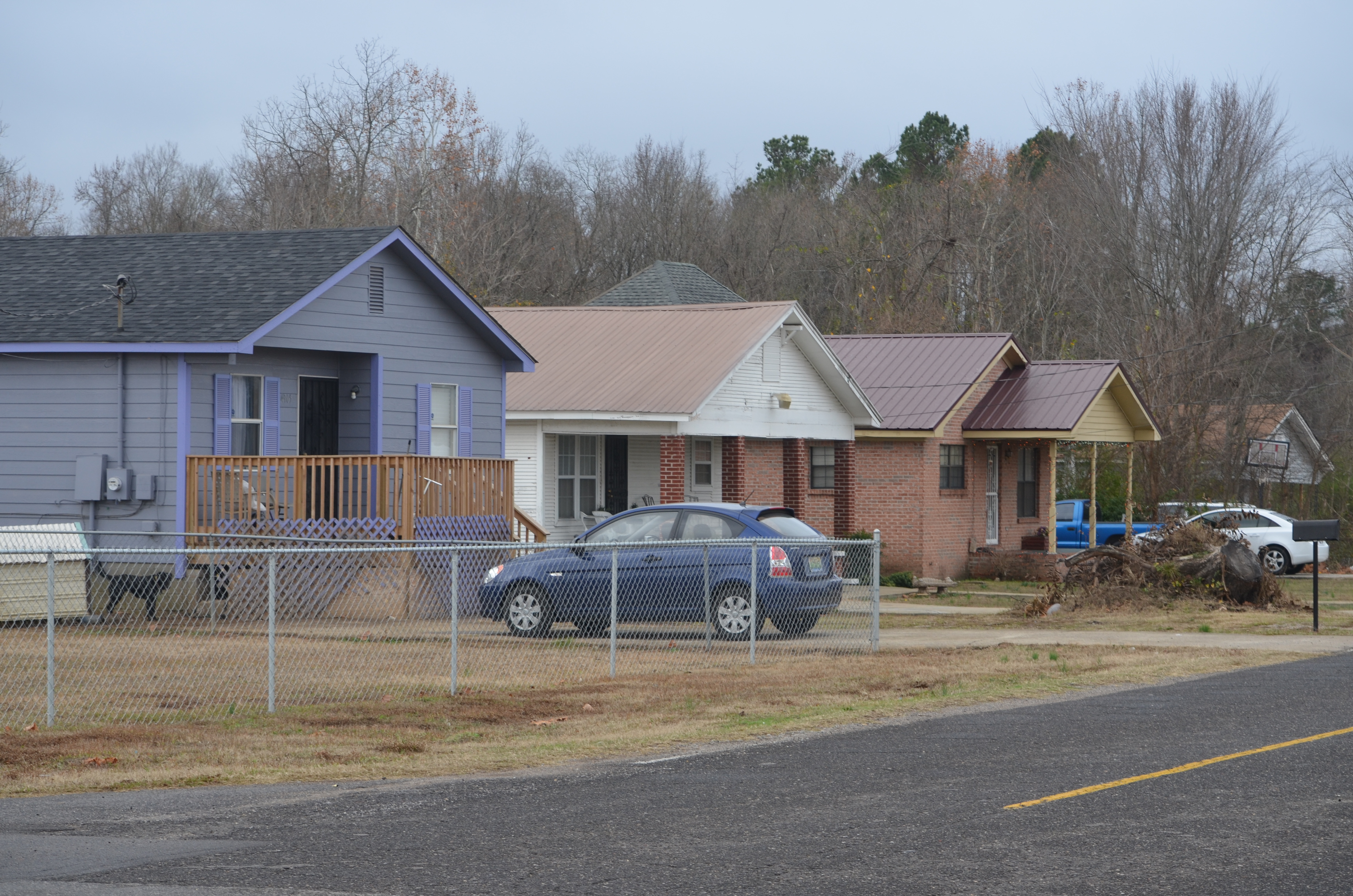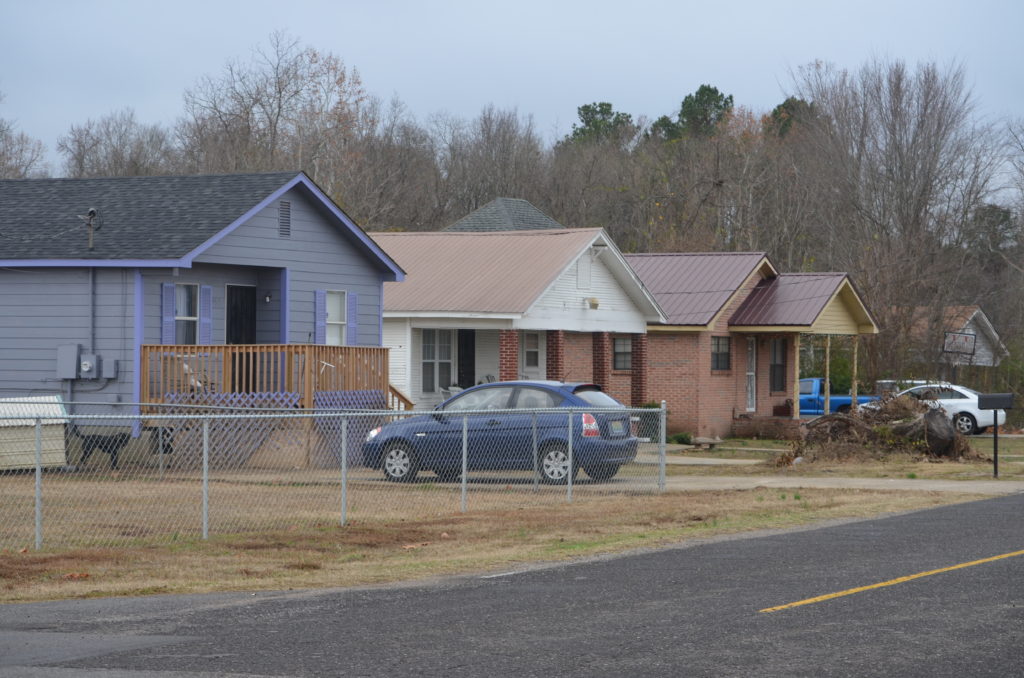
By Denise Stewart
For The Birmingham Times

The collard greens were cooking and Dorothy Gardner was in her home on Grasselli Avenue getting ready to head to her niece’s house for Christmas dinner last year. Then it happened. A tornado with winds of up to 135 mph slammed southwest Birmingham, destroying homes, a church, ripping roof tops and blowing out windows.
“I went to turn off the stove, and I felt myself lifting. I crawled to the wash room and sat in crouched position,” she recalled. “I said ‘Lord I want to be able to enter into your kingdom.’” When the winds died down, Gardner said she looked around outside and everything looked flat. Trees were down, but none hit her home. “My house is an old house, but it is still standing.”
Hundreds of residents have stories of their 2015 tornado survival following one of the most damaging storms in southwest Birmingham in recent history. Many of them also have stories how organizations like the nonprofit group Project Hopewell worked with city leaders, county leaders and other nonprofits to help in the recovery.
Help through Project Hopewell and the City of Birmingham
Getting help for the storm stricken southwest Birmingham presented a challenge for community and government leaders. Although the damage was severe, the value of property was lower than other communities, so the area did not meet the threshold for federal disaster declaration, said Jefferson County Commissioner Sandra Little Brown.
There was also another problem, said Ava Wise, executive director of the nonprofit Project Hopewell. “Some people did not have homeowners insurance. Some had homeowners insurance, but they had to pay high deductibles,” Wise said.
Birmingham was able to use some of its Community Development Block Grant funds to help repair and restore the impacted communities.
“The city set aside $800,000 to help people with significant damage to homes. They had to meet certain criteria, because these were federal dollars,” Wise said. Her office is in the Family Life Center of the church located on Jefferson Avenue in an area hit hard by the storm. “Some of the people we saw were just overwhelmed. Most in this area had never been through a storm like this.”
Project Hopewell launched in 2002, said Rev. E.E. Rodgers, pastor of Hopewell Baptist Church. “We started Project Hopewell because we wanted to help enhance the total quality of life in this community,” Rodgers said. “We don’t have any fences around our church, because we are part of this community. When there are needs, the community causes us to spring into action.”
Because Hopewell and the nonprofit organization are active in the community, residents in need of assistance probably felt more comfortable when asking for help.
“They had to share information with us so that we could be sure they qualified for assistance,” Wise said. “That’s not easy for a lot people to do, but because they know us, it was different.”
Victor Ramsey, 53, is on disability following a stroke five years ago. The tornado destroyed the roof of his Carver Avenue home. He said he was able to get repairs totaling about $15,000.
Without Project Hopewell’s help he said: “It would have been difficult. I appreciate what they did.”
In addition to setting up the process for getting assistance to storm victims, Project Hopewell also worked with Commissioner Brown, radio station WJLD-AM 1400 and Councilman Jay Roberson to raise funds for disaster relief. After the storm, Mayor William A. Bell Sr., Roberson, Brown, Governor Robert Bentley, city council members and Jefferson County commissioners visited the area and offered support. The Church of the Highlands, the American Red Cross and other agencies also came to help
Working together
Commissioner Brown grew up in southwest Birmingham and lives a couple of miles from where the tornado hit. She was pleased with the response to a crisis in the community.
“We all have to work together,” Brown said. “We all are here to represent and to serve the same people. When you work together, you can make things happen.”
Roberson said long-term plans for southwest Birmingham extend beyond disaster relief.
“It’s going to take some time to rebuild, but there is more to come,” Roberson said. “There are street and infrastructure improvements planned around 40th Street and Park Avenue. We also want to attract more retail to the area to impact the overall quality of life.”
Looking Ahead
The tornado relief focused city and community attention on total revitalization, Rev. Rodgers said. A group including representatives from the city, Jefferson County and nonprofits began meeting to discuss long-term remedies for the community.
“We had a vision before the tornado,” Rodgers said. “Our goal is to bring in new houses and rehabilitate some of the older properties. We want to attract young people to the community once again. We have a great opportunity here to rebuild.”
Although the alarms sounded on December 25, 2015, many residents didn’t feel they truly had a safe spot to go and to avoid the danger. In the future, Rodgers says he’d like to see that issue eliminated in southwest Birmingham.
“We need a shelter in this area, and we’re going to work to get one,” Rodgers said. “People need a place where they can feel safe.”



